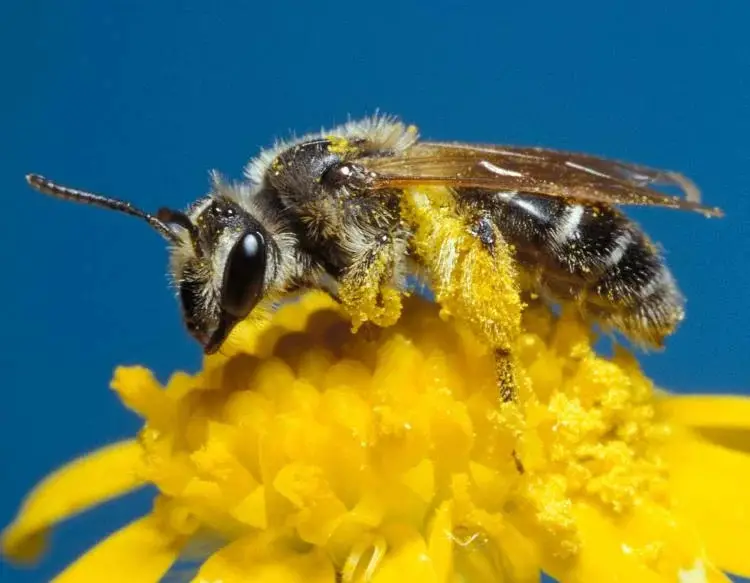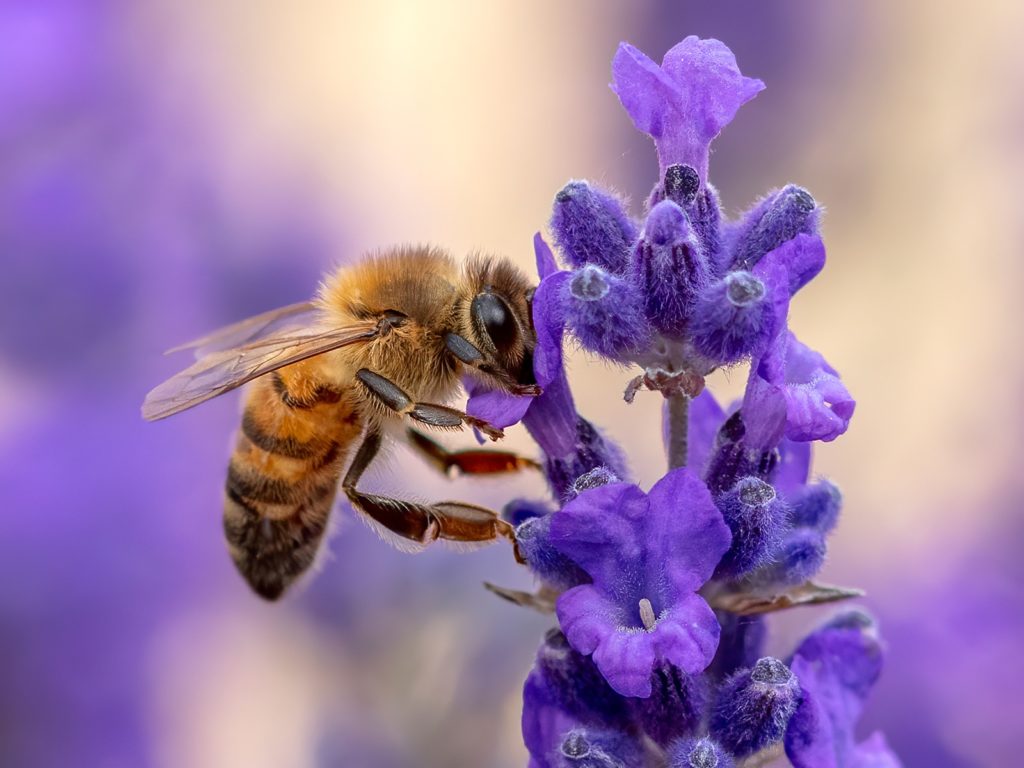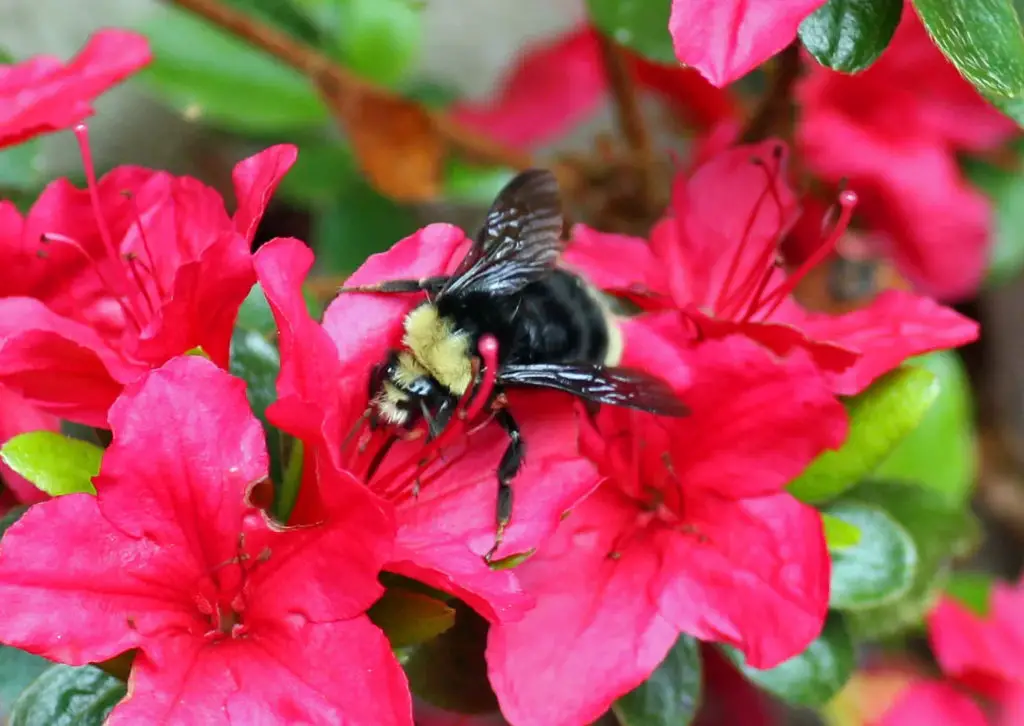Affiliate Disclaimer - As an Amazon Associate I earn from qualifying purchases.
It supports the website. So, Thank you
If there’s one thing we all know about bees it’s that they collect pollen. For most bees, this is one of their main jobs and a single bee could fly up to five miles from the hive in order to get pollen. However, it’s usually only within a one-mile radius. But how do bees get pollen from flowers?
How bees collect pollen can depend. There are some that carry it on their bodies while others have leg hairs onto which the pollen attaches.
But there’s a lot more to learn about how bees collect pollen and what they use it for. Let’s explore this in a little more detail.
Table of Contents
Why Do Bees Collect Pollen?
Bees collect pollen as a food source as it’s packed with protein and is perfect as food for raising the young in the colony. A lot of people think that bees use pollen to make honey but this is not the case. Honey bees also collect a substance from plants called nectar, and it is this that they use to make honey.
Not only do bees gather pollen as an immediate food source but they’ll collect more than they need because they’ll store it for times when there is a lack. For example, during winter when there aren’t as many flowers and the bees remain in the hive.
Bees also collect pollen in order to pollinate flowers. Without bees, many flowering plant species wouldn’t be able to survive. But I’ll talk more about bee pollination later in this post.
Methods Of Collecting Pollen
How bees collect pollen can vary between species. Where honey bees are concerned, it is only the females that collect pollen as they are the workers of the hive. The males largely remain in the hive and their sole purpose in life is to mate with the queen. For this reason, they may not have the same anatomy as the females, for example, they may lack pollen baskets.
Some bees will land on a flower and start sucking up nectar using a long snout. They’ll also collect pollen at the same time but they really don’t need to put a lot of effort into this. They have pollen pouches on their back legs and as they go into the flower, pollen gets stuck to these as well as to the bee’s body.

The bee will then move onto a new flower and will transfer some of this pollen onto the female reproductive organ known as the stigma.
When a bee takes flight, it may pollinate as many as a hundred flowers. But a lot of bees tend to have an affinity with a particular type of flower which they will stick with. This is good news for the plant as there’s a much greater chance of successful pollination this way. Since honey bees are able to use the waggle dance to communicate with other members of the colony, more bees will turn up, further boosting the chance of pollination.
Many bees have scopal hairs and these are what the pollen sticks to. While they can differ between species, they tend to be elongated masses of thick hairs that are found on the hind legs.
What Plants Do Bees Pollinate?
Bees are some of the most important pollinators on earth. It’s thought that they are responsible for pollinating around 80% of human crops so just imagine what would happen if they weren’t around. In North America, there are around 800 species of native plants that rely on bees for pollination.
If you’re looking to attract bees to your garden then you’ll want to make sure that you have a wide array of bee-friendly plants. This can include things like raspberry, roses, thyme, sage, foxgloves, and a whole host of fruit trees. One important thing to keep in mind is that, when choosing bee-friendly plants, it’s always best to opt for native species.
There are around 600 species of wild bees and each one prefers a specific type of plant. For example, mason bees will only pollinate the viper’s bugloss while heather colletes bees pollinate, you guessed it; heather!

Are There Any Bees That Don’t Collect Pollen?
There are some species of bees that don’t collect pollen at all. You’ll notice that these bees, such as the cuckoo bee, don’t have the same physical features as those that do collect pollen. For example, they may lack things like pollen baskets or scopal hairs. In fact, when you look at these bees, it could be easy to mistake them for a wasp as their bodies tend to be a lot sleeker and do not have hairs.
What’s really fascinating is that cuckoo bees, while they don’t collect pollen themselves, still need pollen. They will raid nests of bees that do collect pollen and lay their eggs here. When the eggs hatch, the young cuckoo bees have instant access to the pollen stores and in some cases, they’ll even kill the host’s young. This is known as brood parasitism and is something that’s seen in many species, especially birds.
Final Thoughts
Bees have a lot of important roles within the ecosystem but one of the things they’re best at is pollinating. Without bees, a huge number of flowering plants just wouldn’t be able to survive. What’s more, bees need pollen as a high-protein food source for their young.
If you’ve ever wondered how bees get pollen from flowers, it’s all to do with the substance getting ‘stuck’ to the bee. They have special hairs on their legs and bodies that are used for carrying pollen which they can then transfer between flowers and back to the hive.




